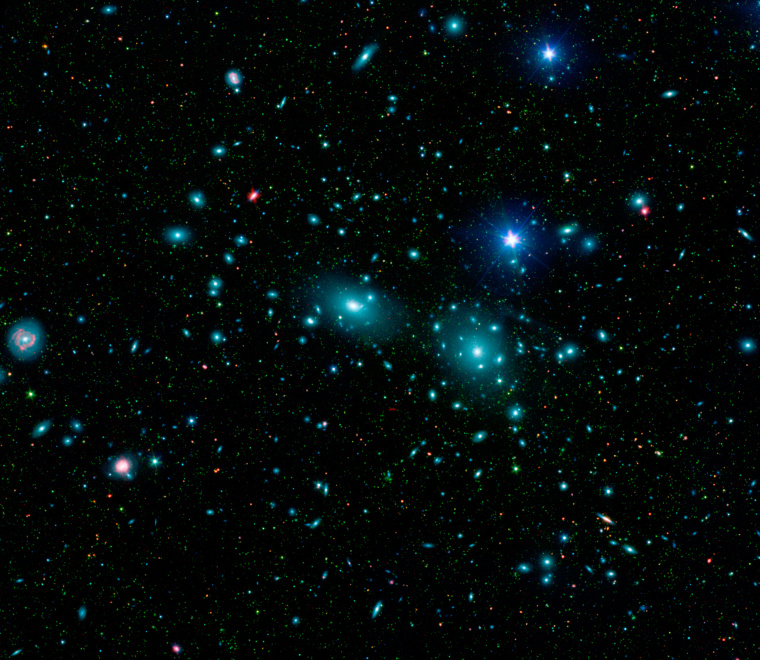When astronomers observe the movements of stars and galaxies, they run into a problem: What they see doesn't quite accord with what they would expect to see, given how much matter is visible and how much gravity it exerts. The swirling stars and galaxies seem to be under the sway of more matter than is observed. As a result, researchers believe there must be a large quantity of unseen matter along with the ordinary visible stuff.
This as-yet-undetected form of matter is invisible because it doesn’t interact with visible light or other forms of radiation. And yet evidence suggests that the universe contains more of this “dark matter” than the ordinary matter — protons, neutrons, and electrons — that we’re all familiar with. The nature of this dark matter is one of the biggest unsolved problems in all of physics.
Dark matter shouldn't be confused with "dark energy," which is just as mysterious. Dark energy is a strange theoretical form of energy that scientists think is pushing every galaxy away from every other galaxy, causing the universe to expand at an accelerating rate.
Who came up with the idea of dark matter?
Although the idea of dark matter dates back to the 19th century, it was a Caltech astrophysicist named Fritz Zwicky who in the 1930s developed the idea in its modern form.
While studying the motion of galaxies within a group of galaxies known as the Coma Cluster, Zwicky calculated that the amount of visible matter was 400 times smaller than what was needed to account for the observed motion. The visible matter couldn’t have produced enough gravity to hold the cluster together, and some of the fastest-moving galaxies should have been “flung clear of the cluster, like water droplets thrown off a spinning bicycle tire,” as theoretical physicist Brian Greene put it in his 2004 book "The Fabric of the Cosmos."
Zwicky called the unseen matter “dunkle materie” (German for “dark matter”). Additional work by astronomer Vera Rubin and her colleagues over the next 30 years made the case for dark matter even stronger, and today’s best estimates suggest that the universe is made up of about four-fifths dark matter and one-fifth ordinary matter.
What is dark matter made of?
We don’t know. One guess is that it’s made of elementary particles, perhaps created some 14 billion years ago at the time of the Big Bang. These hypothetical objects are sometimes called “weakly interacting massive particles,” or WIMPs.
Other candidates for dark matter have also been put forward, including a mysterious subatomic particle known as the neutrino, as well as black holes. But WIMPs are the leading candidate for now.
Another possible explanation for dark matter is that our current theory of gravity — Einstein’s general theory of relativity — is wrong, and that some kind of “modified gravity” theory is needed. Such a theory might explain the observed discrepancies in the motions of celestial objects without the need to postulate the existence of dark matter in the first place. But so far none of the modified gravity theories that have been put forth have gained widespread support from the physics community.
How are we hoping to find dark matter?
A number of experiments now underway aim to detect elusive dark matter particles, including those at the Sanford Underground Research Facility in South Dakota and the Gran Sasso underground laboratory in Italy. The idea is that dark matter particles might be observed interacting with ordinary matter, if the ordinary matter is dense enough. So these experiments use vast tanks filled with liquid xenon, which is denser than solid aluminum, as dark matter detectors. The detectors are located deep underground to shield them from sources of radiation that might confound the results.
Recently, construction began in Ontario on the SuperCDMS SNOLAB experiment, which will use super-cooled crystals of silicon and germanium, rather than xenon, to search for dark matter (the crystals will vibrate if struck by a dark matter particle). And the Alpha Magnetic Spectrometer aboard the International Space Station is observing cosmic rays, which some models suggest may be produced by dark matter particles.
